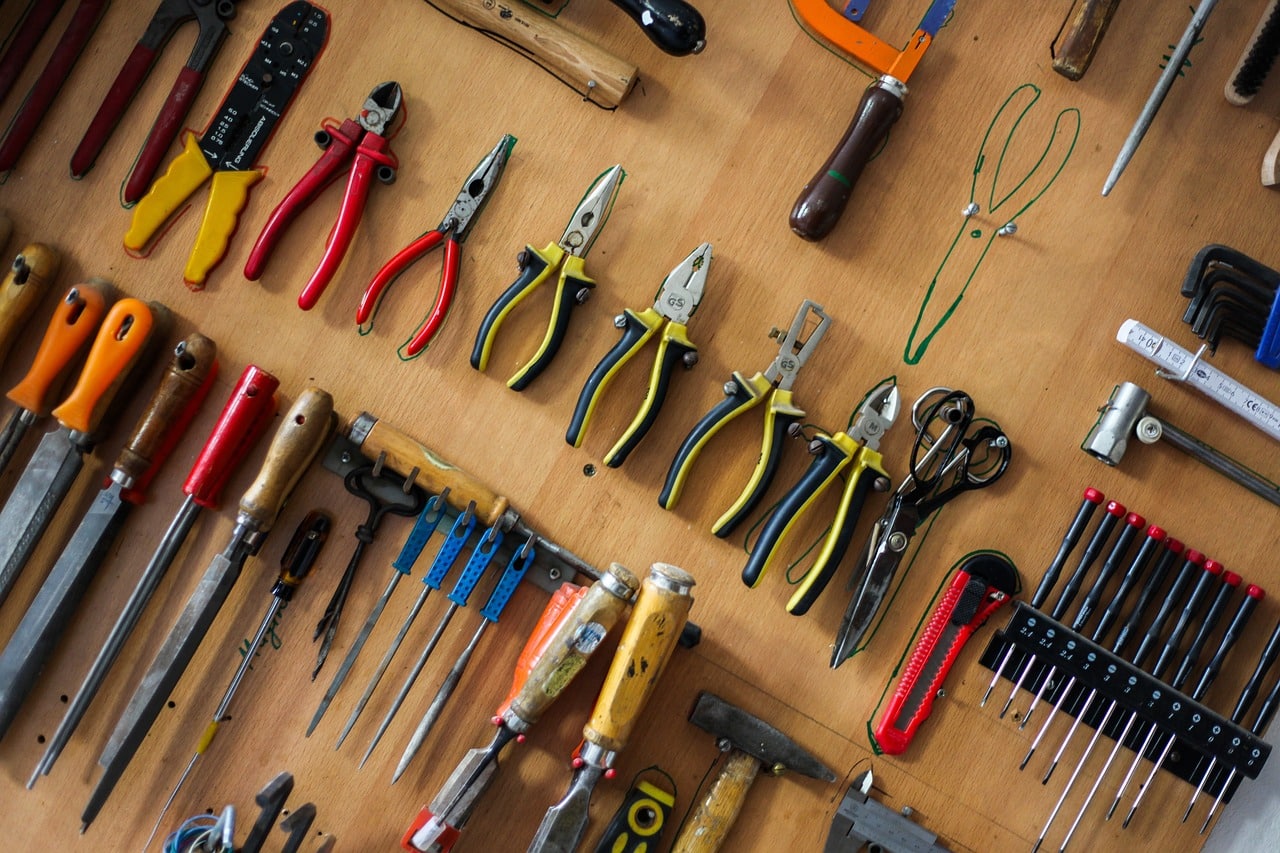Clearance lights can buy quality tools for a reduced price. Whether your clearance tools were purchased from a hardware store, online retailer or liquidation event, it’s critical to maintain your equipment properly for durability and performance. With regular care, clearance tools are more secure and last much longer. Maintaining your gear will also help keep you safe and promote efficiency when a project is underway.
1. Clean Your Tools After Every Use
The only possible first step you could have taken in tool maintenance is cleaning. And when you have finished using them, remember to clean your clearance tools so that no dirt, debris, sawdust or grease gets stuck on the tool after use. This leads to rust, dull blades, and clogged-up works: reduced performance.
Wipe down the hand tools themselves with a dry cloth. If your tools are dirtier, a wet cloth with mild soap does the trick. Be sure to burn them before you save them, otherwise how can they rust.
Power Tools: Compressed air (vents, motors) Use a clean cloth to wipe down the outside. Do not use water as it will damage your electrical components.
2. Inspect for Damage Regularly
Most recognized clearance tools are sold at a cut-rate price but need to be inspected periodically to certify they are safe for practice. Problematic tools are not only ineffectual but also dangerous. The solution is to do regular inspection so that any problems can be discovered early and prevent bigger issues in the future.
Hand Tools: Look for Crack, chip and worn grips.
Power Tools – Look at the cords for frying; Check switches to ensure that they are active and make sure there are no cracks on their housing.
3. Lubricate Moving Parts
Lubrication: The friction that occurs due to the clash of parts moving against one another can wear and even cause adhesion thus there is need for lube to reduce or eliminate these frictions.
If you are using hand tools like pliers or shears, then add a few drops of oil on the joints of the tool. Use a power-tool lubricant as recommended by the manufacturer.
4. Store Tools Properly
Regardless of your situation, storage is important if you want to ensure the performance is intact from your clearance tool. Keeping your tools properly stored protects them from dust, moisture, and the accidental bumps and dings that occur in most workshops.
Toolboxes and Shelving: Dedicated toolbox or shelving is ideal if you are looking to keep your tools in a set compartment. If you have a tropical environment, prioritize rust proof storage units.
Hand Tools: Wipe down your hand tools with a soft cloth. For more soiled tools, add a little soap to the damp cloth and clean. Scorch them before storage, to keep from rusting.
5. Sharpen Cutting Tools
Cutting tools like saws, scissors or knives should be regularly sharpened to remain functional. When your blades are not sharp, it can slow you down, and even make it more dangerous to use.
Hand Tools: Use a sharpening stone or file to maintain the edge on hand tools like axes, chisels, or pruning shears.
Power Tools: blow the dust out of vents and motors with compressed air. Pour it onto a clean cloth and wipe the exterior surfaces. Water: This has the potential to harm electrical components so avoid at all costs.
6. Check for Loose Screws and Bolts
Screws and bolts in power tools can loosen over time because of vibration and regular use. It’s important to check and tighten them to prevent parts from shifting during operation.
Regular Checks: At least once a month, go over your power tools and use the screwdriver or wrench to ensure all screws and bolts are securely tightened.
7. Replace Worn-Out Parts
Unfortunately, the gears are still a mechanical part of your clearance tools that will wear down over time even with the best maintenance regime. Over time, rubber holds belts, blades and many other components may degrade. Replace these parts when loose so that the tool performs correctly and safely.
Purchase Quality Replacements: Whenever you replace parts, opt for high-quality components that meet the standards set by the original manufacturers. It will make certain your tool is running smoothly and properly.
8. Follow the Manufacturer’s Instructions
Many clearance tools come with user manuals that provide detailed instructions on proper maintenance. Even though you may have purchased the tool at a discounted price, it’s essential to follow the manufacturer’s guidelines for care and upkeep.
Manuals: Keep the manuals for all your clearance tools in a safe place for easy reference. Follow the recommended maintenance schedules, safety precautions, and repair advice outlined by the manufacturer.
Your clearance tools serve you so well that you will want them to give quick best results in the subsequent years. If you take the time to clean them regularly, check for damage, lubricate moving parts and store them correctly, they’ll be doing their job to your specifications and lasting longer. This means keeping tools sharp and replacing worn-down parts for safe and effective use.




